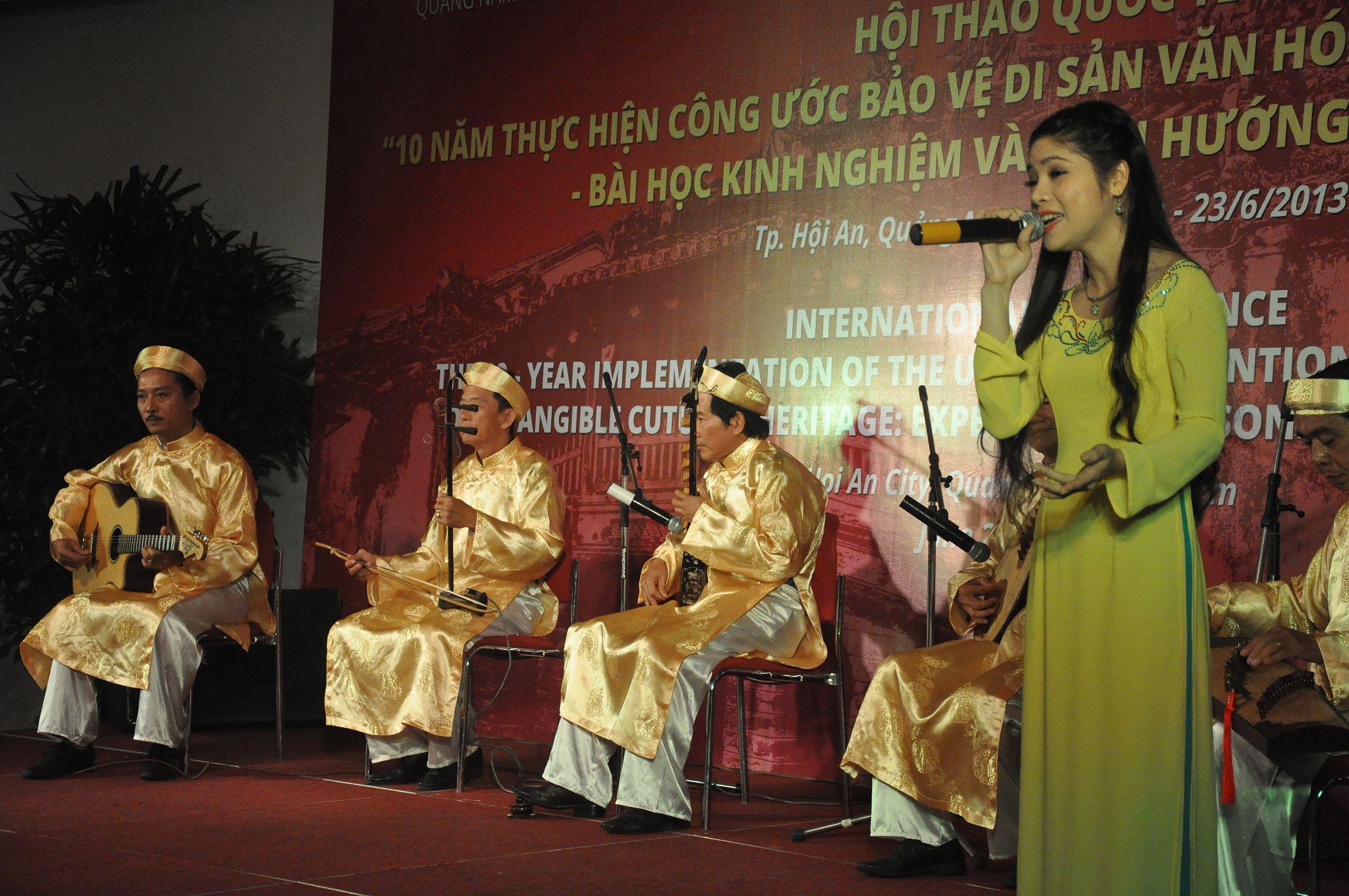At a June 23 international seminar summarizing the preservation of heritage ten years after UNESCO launched the “Convention for the Safeguarding of the Intangible Cultural Heritage” in 2003, several local and foreign experts expressed concern that a number of items now face serious risks of erosion in this time of globalization.
At the seminar, part of the ongoing 2013 Quang Nam Festival which runs till June 26, Irina Bokova, Director-General of UNESCO, stressed that from 2015 on, countries should be called on to further step up preservation of intangible cultural heritage.
Ho Anh Tuan, deputy minister of Culture, Sports and Tourism, pointed out that globalization and dramatic changes in all aspects have resulted in alarming risks of erosion among heritage sites in Vietnam and worldwide.
Prof. Tran Quang Hai, from the French National Scientific Research Center, said that many Vietnamese cultural heritage items, including “hat xam” (the northern region’s folk music, which is typically performed by street artists for a living and has recently been applied for UNESCO recognition), “hat bai choi” (the central region’s folk music), water puppetry and hallmark folk songs of ethnic minorities are very likely to win UNESCO recognition.
Meanwhile, Gaura Mancacaritadipura, from Indonesia, urged that the capability of UNESCO’s secretary board and member countries be improved, as a good number of applications remain unsolved.
|
At a ceremony at the Vinahouse, in central Quang Nam province’s Dien Ban district on June 22, a huge bowl of mi quang (the central region’s iconic noodle dish), which could serve roughly 600 people and measured 3.6 m in diameter and 1.5 m in height, established the Asian record for the biggest bowl of mi quang ever. With a base measuring 0.156 m, the bowl is shaped after the ancient Phu Chiem noodle bowl. It is glazed in the inside and encrusted with terra-cotta dating back to the Nguyen dynasty (Vietnam’s last monarchy, which reigned from 1802 to 1945) on the outside. Accompanying the bowl is a plate of uncooked vegetables which measures 4.1 m in diameter and 0.6m in height along with a pair of chopsticks which are made from mun, a precious type of wood, and are 1.8m long. The organizer also showcased a plate of Cau Mong roast calf, which won the Vietnamese record for the biggest-ever of its kind. The plate, which is 4.5m in diameter and 0.65m in height, has a 0.05m base and is also encrusted with Nguyen dynasty terra cotta. Mam nem (fish sauce made from small fish or shrimps) and uncooked vegetables, which serve as condiments for this popular specialty, were also provided in large quantity. |






















































